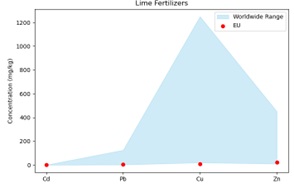Harnessing Nanoparticles for Effective Soil Remediation and Agricultural Sustainability
Keywords:
Salinity, Drought, Agricultural Sustainability, Oil Degradation, Nanomaterials, and Heavy Metals.Abstract
Feeding the expanding global population in the coming decades poses a significant challenge aligned with Sustainable Development Goals. The FAO estimates that to meet the demands of 2050, global food production must increase by 70%. Agriculture is essential for health, environmental sustainability, nutrition, and economic growth. Historically, agricultural expansion has prioritized increasing land productivity through heavy use of fertilizers and pesticides, leading to soil and water mismanagement. However, the limited growth in cropland and adverse environmental impacts have prompted a shift toward more sustainable agricultural practices. Current challenges include managing agrochemicals, addressing water pollution, combating soil degradation, mitigating climate change effects, and controlling plant pathogens. The harmful use of insecticides and pesticides has exacerbated issues such as air and water pollution and soil degradation. Additionally, abiotic stresses like salinity, drought, and flooding are further diminishing agricultural yields. The reliance on traditional farming methods and agrochemicals contributes to environmental degradation and threatens sustainability. To address these issues, nanoremediation is emerging as a promising technology. This innovative approach utilizes engineered Nanoparticles (NPs) with unique properties, such as high surface area and catalytic abilities, for effective environmental cleanup. Nanoparticles have shown potential in adsorption-based removal processes, water nanofiltration, and remediation of pollutants in soil, water, and air. The rise of nanoparticle use has led to their environmental release, with significant accumulation in soil compared to air and water, primarily from agrochemicals and other anthropogenic sources. Heavy metals in soil, stemming from both natural and human activities, complicate contamination issues. Fertilizers and agrochemicals contribute to heavy metal accumulation, impacting soil fertility and plant health. Soil properties such as texture and organic matter content influence the interaction between NPs and heavy metals, affecting their distribution and mobility. Nanoremediation, with its focus on specialized nanoparticles like titanium dioxide (TiO2) and nanoscale zero-valent iron (nZVI), offers a promising solution for addressing environmental pollutants and enhancing sustainability. This review highlights the role of nanoremediation in combating soil contamination and improving environmental health, emphasizing the need for advanced technologies to address the pressing challenges of agricultural productivity and sustainability.


















